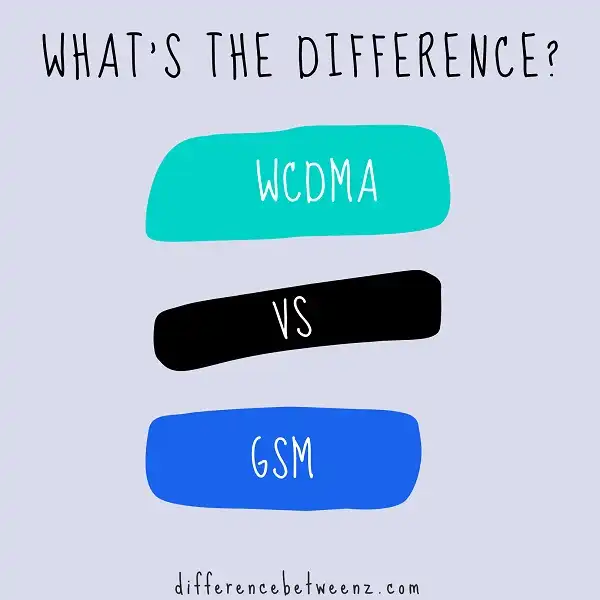WCDMA and GSM are two of the most popular cellular technologies in use today. While they share a lot of similarities, there are some key differences between them that you should know about before choosing a service provider. In this post, we’ll take a closer look at what those differences are, and delve into which technology might be right for you.
What is WCDMA?
WCDMA is a third-generation (3G) mobile phone standard. WCDMA is the basis of Japan’s NTT DoCoMo’s FOMA service and the global UMTS system. WCDMA features increased spectral efficiency and data rates to enable the delivery of multimedia services. WCDMA represents a significant evolution in radio technology, providing increased capacity and higher data rates. WCDMA also supports the more efficient use of the available spectrum, resulting in increased capacity and improved spectral efficiency. WCDMA is a radio access technology that has been adopted as the 3G UMTS standard by the International Telecommunication Union (ITU). WCDMA is currently being deployed by operators around the world and has been commercialized in over 50 countries. WCDMA has been designed to provide a high-speed, broadband wireless access solution that is backward compatible with existing GSM/EDGE networks. WCDMA supports data rates of up to 2 Mbps for fixed locations and up to 384 kbps for mobile users. WCDMA is an air interface standard that uses code division multiple access (CDMA) technology for both forward link and reverses link channel access. WCDMA is based on direct sequence CDMA (DS-CDMA
What is GSM?
GSM, or Global System for Mobile communication, is a wireless technology that is used for mobile phone networks. GSM uses specialized digital radio technology to transmit voice and data communications over long distances using relatively low power levels. GSM operates in the 900 MHz and 1800 MHz frequencies and has been in widespread use since it was first introduced in the early 1990s. GSM has several advantages over its predecessor technologies, including higher call quality and more efficient use of available radio spectrum, as well as support for multiple services like messaging and data transfers. Thanks to these features and many others, GSM has become one of the most widely used mobile phone technologies across the globe.
Difference between WCDMA and GSM
WCDMA and GSM are two distinct mobile communication technologies that have many similarities as well as some important differences. While WCDMA is designed for high-speed internet access, GSM is primarily focused on voice communications. WCDMA is also considered to be more efficient in terms of data usage than its counterpart, making it a popular choice for applications such as streaming video or online gaming. However, one of the main disadvantages of WCDMA is that it requires a wider bandwidth than GSM and therefore has less reach. On the other hand, GSM phones tend to be more compatible with older networks and make use of different frequencies, meaning they can often cover larger areas than WCDMA devices. While WCDMA and GSM each have advantages and drawbacks depending on your needs, they are both essential components of modern mobile communication technology.
Conclusion
WCDMA and GSM are the two dominant cellular technologies in use today. While they share some similarities, there are also key differences between the two. Understanding these differences can help you choose the right technology for your needs.


